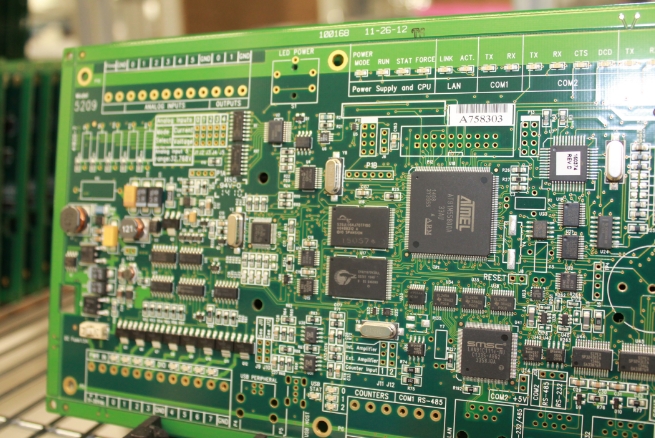Double sided PCB assembly is an intricate process in the manufacturing of circuit card assemblies (CCA) that utilize electronic components mounted on both sides of a printed circuit board (PCB). This comprehensive guide explores the various steps involved in the process, including the utilization of a reflow oven, different types of CCA manufacturing, and the role of surface mount technology (SMT) assemblies. Furthermore, it discusses the significance of intellectual property in the PCB industry.

Double sided PCB assembly refers to the manufacturing and construction process of printed circuit boards that accommodate electronic components on both sides. It enables increased functional density, making it suitable for various applications such as power supplies and other electronic devices. The process involves utilizing a reflow oven for component attachment and can vary depending on the type of circuit card assembly (CCA) being manufactured.
The double sided PCB assembly process consists of several stages, including:
Schematic Design
The initial step involves creating a schematic design using computer-aided design (CAD) software. This phase determines the placement of electronic components and the routing of circuit traces.
Component Selection and Sourcing
Selecting appropriate electronic components is crucial for the functionality and reliability of the PCB. It involves evaluating factors such as availability, compatibility, performance, and cost. Components can be sourced from manufacturers or distributors.
PCB Manufacturing
Once the component selection is complete, the PCB manufacturing process begins. This includes designing the PCB layout, creating photomasks, and etching the copper layers. The type of PCB material depends on the specific requirements of the CCA.
Component Placement
In double sided PCB assembly, components are placed on both sides of the PCB. Automated pick-and-place machines are commonly used to achieve precise component placement, ensuring proper electrical connectivity and thermal management.
Solder Paste Application
Solder paste, a mixture of flux and solder particles, is applied to the areas where components will be mounted. This ensures a reliable and secure connection during the reflow soldering process.
Reflow Soldering
The PCB undergoes reflow soldering, where it is heated within a controlled environment to melt the solder paste and form strong bonds between the components and PCB. This process ensures proper electrical connections and thermal integrity.
Inspection and Testing
Post-soldering, the assembled PCB undergoes thorough inspection and testing. Various methods, such as visual inspection, automated optical inspection (AOI), and electrical testing, are utilized to detect any defects or faults in the assembly.
Double sided PCB assembly is employed in different types of circuit card assemblies (CCA), including power supplies, control boards, communication devices, and more. These CCAs vary in complexity, design, and functionality, catering to various applications and industries.
Surface mount technology (SMT) assembly is widely used in double sided PCB assembly. It allows for the placement of surface-mount components directly onto the PCB, offering advantages such as increased component density, miniaturization, and improved signal integrity. SMT technology has revolutionized electronic manufacturing and is an integral part of the double sided PCB assembly process.
Intellectual property, including patents, trademarks, and copyrights, plays a crucial role in the PCB industry. Companies involved in double sided PCB assembly must protect their innovations and respect the intellectual property of others. Compliance with Intellectual Property Constituency (IPC) guidelines and engaging legal counsel can help safeguard proprietary designs and technologies.
Double sided PCB assembly, involving electronic components and various types of circuit card assemblies, is a fundamental process in modern electronics manufacturing. Understanding the intricacies of the assembly process, incorporating surface mount technology, and considering intellectual property concerns are vital for the success of PCB manufacturers. By following industry best practices and complying with standards, manufacturers can produce reliable and high-quality double sided PCB assemblies.
Q1. Can I use small electronic parts on a double sided circuit board?
Certainly! Double sided circuit boards can accommodate both small parts that are mounted on the surface and larger parts that are inserted through holes, giving you flexibility in component selection.
Q2. What makes double sided circuit boards better than single sided ones?
Compared to single sided circuit boards, double sided ones offer several advantages. They can fit more functionality into a smaller size, distribute power more effectively, minimize interference from electrical noise, and dissipate heat more efficiently.
Q3. What are the common difficulties encountered when assembling double sided circuit boards?
Common challenges include accurately placing components, managing heat generated by the components, ensuring reliable solder connections, and conducting thorough electrical testing.
Q4. Are there any special testing procedures for double sided circuit boards?
Yes, double sided circuit boards require comprehensive testing procedures. These may include checks for continuity to ensure proper electrical connections, functional testing to verify the board's performance, and boundary scan testing to assess the integrity of components.
Q5. How can I improve heat management in double sided circuit board assemblies?
Enhancing heat management involves strategic placement of components that generate heat, utilizing heat sinks to dissipate heat effectively, and designing the board with proper ventilation and cooling mechanisms to prevent overheating.